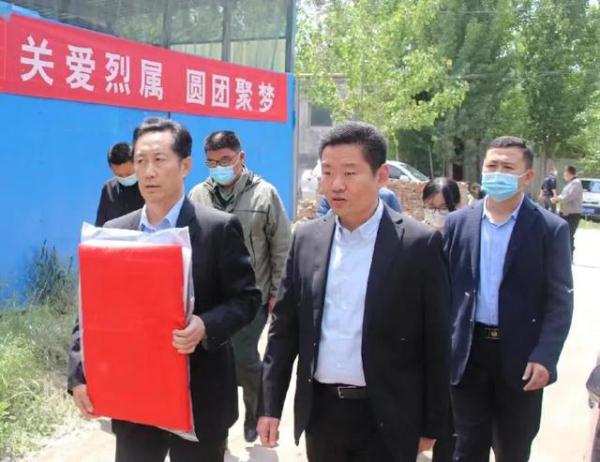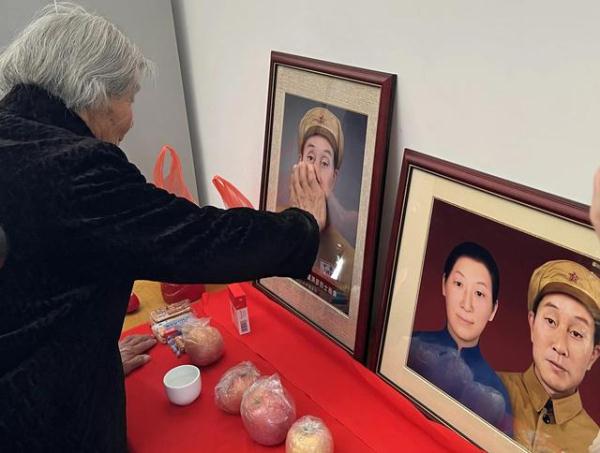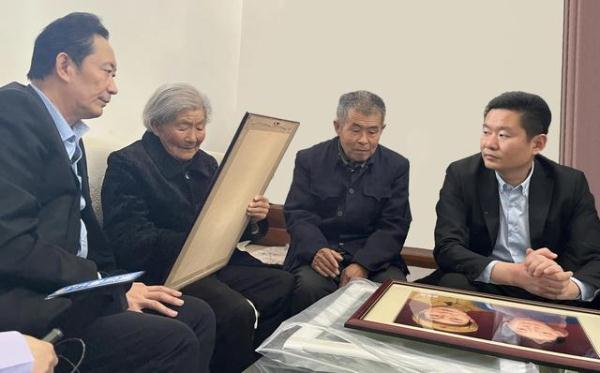At 8 o’clock, witness the news every day. CCTV will sort out the big and small things that happened around us within 24 hours for you.
[concern]
Trouble is not limited to "betraying relatives and leaving relatives" and grounding Boeing 737-8 worldwide.

The attitudes of the United States and Canada, which had refused to stop the Boeing 737-8, also made a 180-degree change. On the 13th, local time, the two countries announced one after another that Boeing 737-8 and 737-9 aircraft would be grounded for safety reasons. Boeing subsequently issued a statement at the official website, expressing its support for the grounding decision. So far, all countries with Boeing 737-8 aircraft have grounded this aircraft. The Wall Street Journal pointed out that this was the most serious safety setback for Boeing since the Federal Aviation Administration issued the flight ban for Boeing 787 in 2013.
Boeing is in more trouble or is on its way.
Boeing’s share price continued to fall sharply on the 12th, closing down 6.15%. Bloomberg even used the global "betrayal" to describe the enormous pressure faced by Boeing and the FAA. Not only that, but even the orders that Boeing will get may be sent to its opponents.
Who will pay the loss?
Reuters reported that Boeing, airlines and insurance companies will face huge compensation after the plane crash. The insured amount of the plane itself may be around $50 million. In addition, the report also quoted Justin Green, an aviation lawyer based in new york, as saying that Boeing may face lawsuits from the families of the victims in the United States, and the judicial compensation for those killed in the air crash in the United States may be as high as 2 million to 3 million US dollars per person — — The exact amount depends on the applicable law.
CCTV comment: Boeing ignores life safety and is doomed to be hit in the face.
If Lion Air is a hurricane, Egypt Air is a tsunami. This time, what unites the whole world and China is the common concern about "aviation safety". In the face of life safety, human beings are all a community of destiny. China stepped forward and took the lead in making decisions, making the image of a responsible big country fuller. Whether based on interests or prejudice, in the face of facts and the common concern of mankind, the community of destiny will eventually transcend all differences.→ detailed
[domestic]
This year, China is expected to achieve 98% of the country’s administrative villages with 4 G.
Recently, the Ministry of Industry and Information Technology issued the "Guiding Opinions on the Work Style Construction and Rectification in the Information and Communication Industry in 2019". According to the "Opinions", this year the Ministry of Industry and Information Technology will launch the broadband "Double G Double Lift" action plan to reduce the average broadband tariff of SMEs by 15% and the average mobile network traffic tariff by 20%; We will continue to deepen the pilot of universal telecommunications service, speed up the construction of 4G networks, and strive to achieve 4G access in 98% administrative villages and broadband access in 98% poor villages.
Progress in the 100-day campaign of the General Administration of Market Supervision to rectify health care chaos: dispatching millions of law enforcement personnel
As of the 10th, a total of 6,535 cases were filed, with false propaganda and false advertising accounting for the highest proportion. In order to urge all localities to comprehensively control the chaos in the "health care" market and ensure the effectiveness of the "100-day action", since February 18, 13 departments have formed 13 joint supervision teams to conduct supervision throughout the country. At present, 13 supervision teams have completed the supervision of 18 provinces, autonomous regions and municipalities including Beijing, Tianjin, Shanxi, Inner Mongolia, Liaoning, Jilin, Heilongjiang, Shanghai, Jiangsu, Zhejiang, Fujian, Shandong, Hubei, Hunan, Chongqing, Sichuan, Shaanxi and Gansu.
Development and Reform Commission: Domestic refined oil prices will not be adjusted on March 14th.

According to the website of the National Development and Reform Commission, since the domestic refined oil price adjustment on February 28th, 2019, the oil price in the international market has fluctuated slightly. According to the current domestic refined oil price mechanism, the average price in the first 10 working days on March 14th is less than that in the 10 working days before February 28th, and the price adjustment amount is less than that in 50 yuan per ton. According to Article 7 of the Measures for the Administration of Petroleum Prices, the gasoline and diesel prices will not be adjusted this time, and the unadjusted amount will be added or offset in the next price adjustment.
The State Council published the human rights record and human rights violations in the United States in 2018.
In recent 3 days, the State Council released the Country Human Rights Report for 2018, which continued to criticize the human rights situation of more than 190 countries in the world, but turned a deaf ear and turned a blind eye to its own serious human rights problems. According to the human rights records released by the State Council Office, there were 57,103 gun-related cases in the United States in 2018, resulting in 14,717 deaths and 28,172 injuries, including 3,502 minor casualties. In 2018, there were 94 school shootings in the United States, with a total of 163 casualties, which was the year with the largest number of school shootings and the heaviest casualties on record. According to the human rights record, the United States has become the most polarized western country. 1% of the richest people in the United States own 38.6% of the country’s wealth, while the total wealth and income level of ordinary people continue to decline. Nearly half of American families live in poverty, and 18.5 million people live in extreme poverty. The poverty rate of African-Americans is 2.5 times that of whites, and the unemployment rate has remained at about twice that of whites for a long time.
[international]
Trump’s latest statement implies that a key obstacle in the negotiations has been eliminated.
The Bloomberg report quoted Trump’s speech at the White House that day, saying, "We can reach an agreement before signing it, or we can start negotiations on the last few points when the agreement is almost completed. I prefer the latter. But it’s not that important ","either way will do ". According to experts’ judgment, Trump’s statement that "both ways will do" may imply that a key obstacle between China and the United States has been eliminated.→ detailed
The case of American university enrollment fraud shows that "talented gunmen" can score according to their needs.
Recently, the U.S. Department of Justice exposed the bribery scandal of American elite schools, which made dozens of celebrities from all walks of life and many famous schools ashamed. However, in this scandal, a genius emerged as a substitute for the exam. According to the Associated Press reported on the 13th, dozens of people have been arrested after the scandal was exposed. One of them, Mark Riddle, a pre-school counselor, will be tried in April on charges of fraud, money laundering and so on for taking money to take exams for students or modifying exam answers. When the prosecutor introduced the case, he said that Mark was really "very smart". When he collects money to take the exam for his students, he will ask them in advance what kind of results they want to get, and then they can really get the results they want.
United Nations report: If environmental protection is not strengthened, millions of people may lose their lives by the middle of this century.
The United Nations Environment Programme (UNEP) issued a report at the Fourth United Nations Environment Assembly in Nairobi, Kenya, saying that if human beings can’t take urgent actions to protect the environment, human health will be increasingly threatened. The report warns that if environmental protection is not strengthened immediately, millions of people around the world will lose their lives due to environmental problems by the middle of this century. The report also pointed out that by 2050, with the growth of global population, grain production will increase by 50%. Therefore, it is suggested that people reduce food waste in their daily lives and advocate a healthy diet structure to reduce the demand for increasing grain production.
Russia and the United States reached a cooperation agreement to discuss the joint research of the moon and Venus.

According to a report by Sputnik on the 14th, sergeyev, president of Russian Academy of Sciences, said after meeting with experts from the National Aeronautics and Space Administration (NASA) that Russian and American experts have reached an agreement to hold talks in Moscow in October 2019 and spring 2020 to discuss issues related to two joint projects: Venus research and lunar research.
Society
On the second anniversary of Beijing’s "strictest property market regulation policy", new house transactions bottomed out and rebounded.
Two years ago, on March 17th, Beijing introduced the strictest property market regulation policy in history, which was called "3.17 New Deal". The regulations of recognizing the house and the loan, and raising the down payment ratio of the second home to 60% pointed to investing in speculative real estate speculation. Since the "3.17 New Deal", Beijing’s new housing market has experienced a waist cut in 2017 and climbed in the trough in 2018; Up to now, the cumulative decline in second-hand housing prices in Beijing has also exceeded 10%; The low premium of Beijing land market has become the norm. In 2019, the overall positioning of "staying in the house without speculation" remained unchanged. As urban policy and classified guidance became the theme of regulation, "stability" remained the main tone of the real estate market. In the eyes of the industry, in 2019, the new housing market in Beijing will still maintain a stable general trend, but the transaction volume may increase slightly.
Cann’t hide! Universities will automatically receive calls when they call students by AI.
"I am an intelligent voice assistant of Hangzhou Electric Power Counselor ‘ Xiao AI’ I found you absent from class today … …” Recently, students who are absent from classes at Hangzhou Dianzi University will receive such a voice call, and at the moment when the number is dialed, the students’ absenteeism information has been transmitted to the counselor and recorded. This "black technology" made netizens exclaim that it is more and more difficult to skip class when the class is punched to the next level. On the issue of roll call, the game between teachers and students has become heated.
The father keeps a dog to supervise his daughter’s homework. Netizen: The dog has broken his heart for this family.

"If a daughter plays with a mobile phone, it will react, but there is certainly no way to supervise her like a person." These days, a dog in Guizhou who can supervise girls’ homework has become popular on the Internet. In the video, a little girl is doing homework, and a white dog is kneeling on the table with his front paws, which makes people laugh. The owner of the puppy told reporters that the puppy is called "rice ball" and will be 3 years old soon. He has trained him since he was a child, and now he has learned many skills. It is quite accidental to teach him to watch his daughter do her homework. Once, when Xu Liang was busy with housework, he told the rice ball to "watch her sister do her homework". I didn’t expect it to really understand, so she stood next to her daughter and watched her write.
After the Olympics fever, children’s programming classes are on fire again.

Ignorance of programming is a new illiteracy, and loss of viability without code … … With the rapid development of information technology, parents’ "scientific and technological anxiety" is increasing day by day. With the great wish of "don’t let children lose at the starting line of artificial intelligence", children’s programming classes have become popular, and after the Olympics fever, they have become another new thing in children’s extracurricular training curriculum. For the current popularity of programming training, professionals worry that it will be like the "Olympics fever" of that year and become the result of utilitarian training. In this regard, he suggested that parents must be rational and choose according to their children’s actual situation. The main purpose should be to develop children’s interests, rather than pursuing utilitarian goals, such as increasing the competitive weight of young children and young children.
Doctors are forced to rest after taking antipyretics and insisting on surgery: never advocate being on duty with illness.

Dr. Zhou Weiguang, a doctor of general surgery in Haining Central Hospital, received a notice of compulsory rest. It turns out that he has been working hard for a long time, but he is "hard-shouldered" and insists on working. Since March 11th, Zhou Weiguang has had fever intermittently. On the morning of the 12th, after the operation, Zhou Weiguang slept in the duty room to recuperate, and then rushed to the clinic to do colonoscopy for several patients who had made an appointment. On the morning of 13th, when dealing with the doctor’s advice, colleague He Qiang found Zhou Weiguang leaning on the table. "At that time, he was cold all over, and his body was very uncomfortable.". It was only when I took my temperature that I found it was 39.5℃… … At noon, Zhou Weiguang appeared in the operating room again, helping his colleagues to finish the operation. Busy until 6 pm. Zhou Weiguang insisted on working in spite of illness, but colleagues in the department saw it in their eyes and it hurt more in their hearts. As soon as everyone met, they immediately reached a consensus and gave Zhou Weiguang a notice of compulsory rest, asking him to have a good rest.
The teacher left homework to hatch chickens, and the parents collapsed and called it "unheard of"

Recently, some netizens revealed that a fourth-grade teacher in a primary school in Hangzhou has arranged a wonderful scientific practice assignment — — Incubate chickens at home. Students should observe, record and take photos every day, and finally make a record form and write down a summary. If they don’t complete it, they won’t get the corresponding credits, and the credit value is quite large. Many parents are puzzled by this homework. They really can’t understand the wonderful idea of this science teacher, incubating chickens? Incubate with what? How about buying one incubating machine for each family? Incubate under the covers? Where can I buy fertilized eggs? Take an egg every day. Do you know that the egg will be killed? What should I do if I survive? Keep it or just kill it? I’m really worried when I hatch, and I’m even more worried when I hatch.
You can’t forget if you want to! Research shows that forgetting takes more brains than remembering.
American researchers have found through neuroimaging technology that forgetting something may take more brain power than remembering it. Studies have found that forgetting an unpleasant experience requires more attention than remembering it. The research results not only prove that human beings have the ability to choose what to forget, but also show that deliberately forgetting something requires "moderate" activity in the sensory and perceptual areas of the brain, which is higher than remembering the same thing.
[face]
[Kewell] Hungarian National Assembly President: China’s development has changed the world pattern

China two sessions, the world attention. Hungarian National Assembly President Gervais said that China’s great development achievements have changed the world structure, and the two sessions in China are important windows for the world to understand China. Kewell said that when he visited China in 2017, he witnessed the great achievements made by China in reform and opening up. He believes that the reform and opening-up policy has not only made China’s economy soar, but also changed the world political and economic structure.
[Manafort] Trump’s former campaign manager was sentenced to another 43 months in prison. new york prosecutors added 16 charges.

On the 13th, local time, Mana Ford, former campaign manager of US President Trump, was sentenced again in the federal court in Washington, D.C., and was sentenced to another 43 months in prison for a crime accused by Mueller, the special prosecutor of TongRumen. At the same time, prosecutors in new york filed 16 more charges. In court, 69-year-old Mana Ford expressed remorse in court. Because gout can’t stand, he has been sitting in a wheelchair. Before the sentencing was announced, he said to the judge, "I’m sorry for what I did." In the end, a federal judge in Washington, D.C., sentenced Mana Ford to 73 months in prison, but 30 months of the sentence will be executed at the same time as his previous sentence.
[james shaw] The leader of the New Zealand Green Party was attacked and injured in downtown Wellington.
James shaw, leader of New Zealand’s Green Party and New Zealand’s Minister of Environment and Climate Change, was attacked and injured by unknown people on his way to Congress on the 14th. The attacker was arrested by the police. At around 8: 00 local time on the 14th, james shaw was attacked on his way to the New Zealand Parliament. The attack took place in downtown Wellington, when a middle-aged man stopped james shaw, confirmed his identity and punched him in the face, causing one eye injury.
[Messi] "C Ronaldo is great! He spent a magical night. "

At 4 o’clock in the morning on March 14th, Beijing time, in the second round of the Champions League quarter-final, Barcelona beat Lyon 5-1 at home, and the total score of the two rounds was 5-1, which successfully advanced to the Champions League quarter-finals. Messi, Barcelona’s number one hero who scored two goals and assisted twice after the game, was interviewed. He praised Cristiano Ronaldo’s outstanding performance in this round of Champions League: "The performances of Cristiano Ronaldo and Juventus are excellent, impressive and surprising. I thought Atletico would be better, but Juventus was full of strength, and Cristiano Ronaldo scored a hat trick and had a magical night. "
See you at 8 o’clock tomorrow!


















































